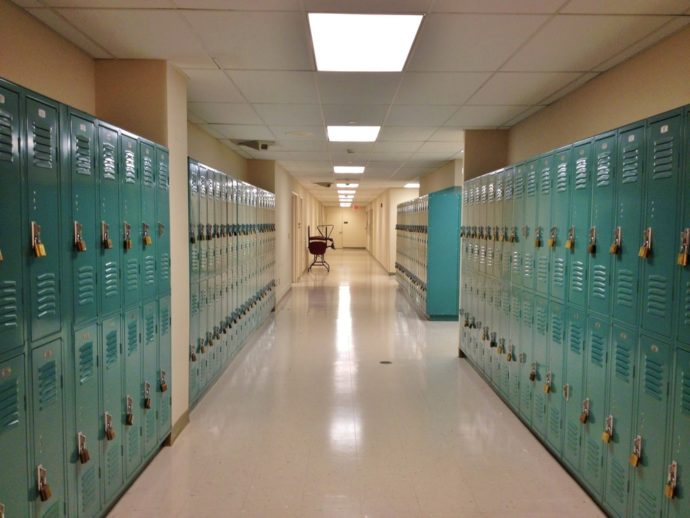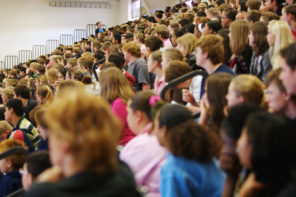One strategy to help create a safer space where threats are mitigated and students and staff feel safe.
Schools should be safe havens for students, refuges from the harshness of the outside world. However, the opposite is too often true. According to a study published in the April 2018 issue of the Journal of Child and Family Studies, “More people have died or been injured in mass school shootings in the United States in the past 18 years than in the entire 20th century.”
The data are alarming, but we are not powerless to effect change. Tools are available to improve the security of our schools and the safety of our students without draining resources or budgets. Situational awareness is one such tool.
What Is Situational Awareness?
Situational awareness (SA) is a basic, conscious practice of recognizing what is normal and, more importantly, anything that is abnormal in any given situation that signals potential danger. When you become more aware, you will be able to identify, assess, report, and avoid threats to you and everyone around you.
SA is about allowing your sixth sense to play a role in your daily life by:
- Being mindful of your surroundings and the overall environment.
- Being mindful of others around you and anything that might seem out of place.
- Assessing actions, activities, and occurrences that might affect you.
Consider how SA might have saved 17 lives:
Nikolas Cruz—carrying a rifle case and a backpack filled with magazines— took an Uber to Marjory Stoneman Douglas High School in Parkland, Florida, on February 14, 2018. Just after 2:00 p.m., he walked onto the crowded campus and into the freshman building.
Although a staff member noticed Cruz “walking purposefully” toward the building with a rifle case and backpack and mentioned it to a colleague, he did not challenge Cruz, a former student. In fact, nobody paid much attention until Cruz opened fire, killing 17 people.
While hindsight is 20/20, what if the Uber driver had been more aware of his fare—the young man’s demeanor and the fact that he was taking a rifle case to a school? What about the others who saw Cruz carrying the rifle case and heavy backpack but didn’t consider those red flags? What if those around Cruz had asked themselves these important questions:
- Is there a visible health or safety threat?
- Is there an individual acting out of the ordinary that might pose a risk?
- Are there cues or contextual clues that indicate some- thing is “off”?
- Is there anything I can do that would reduce the threat?
- Should I act now or later?
This simple example illustrates that even the most basic level of situational awareness could have changed the course of history.
The Value of SA in Schools
The value of SA is not exclusive to preventing gun violence. SA can be a critical line of defense for any threat: school shootings, gang behavior, child abuse, sexual predators, drugs and alcohol and student self-harm.
Even having multiple security officers on campus is no guarantee of protection. They cannot be everywhere at once nor can they see everything at once. When combined with other safety measures, such as cameras, fences, metal detectors, and security officers, SA can provide an additional layer of protection by putting everyone into the safety and security mind-set, including administrative staff, security officers, custodial staff, teachers, students and parents.
A school with 10 people assigned to safety and security equates to 20 eyes and 20 ears. However, an aware campus where every student, parent, teacher and staff member are alert to anomalies can equate to thousands of eyes and ears. A cohesive approach to safety is one in which the campus is under the purview of “switched on” people.
By ensuring that every member of the school community understands SA and what to do when faced with a threat, a situation becomes much easier to handle and the threat level is reduced significantly. Involving students and parents in the safety process not only is a good idea, but is a significant shift in school safety in general.
Erring on the Side of Caution
When it comes to our schools, we all must err on the side of caution. In short, the rule should be “If you see something, say something.” But people won’t report something if they are unsure of what they saw. We are often reluctant to report something if we are the only ones who noticed it.
Safety and security become stronger when you empower the community to “be aware and to stay aware,” which in turn leads to an effective process of “If you see something, say something.”
The only sure way to limit violence in our schools and safeguard the children in our care is to act decisively when the moment calls for it. Does that mean educators should immediately call the police if a student is behaving erratically? Not necessarily. However, it does mean that they need to use good judgment when assessing threats to the student body and school staff. It means not shrugging off warning signs or nagging suspicions that something is wrong. Often, their intuition is trying to tell them something that their conscious mind has missed.
Being Alert to Early Warning Signs
Everyone should be alert to early warning signs that may indicate a potential threat. This is particularly true when it comes to threats stemming from individuals within the student body. Here are some of the more common signs:
- Feelings of rejection
- Low self-esteem
- History of violence, particularly at home
- Being bullied or bullying others
- Withdrawal from peers and activities
- Lack of coping skills
Doubtless, many students struggle with one or more of these challenges. Too often, they are part and parcel of being a teenager. However, when left unaddressed, a situation can become violent.
Ultimately, there is no way to eliminate all threats to the student body or school staff. However, it is possible through situational awareness to create a safer space where threats are mitigated—a place where children can feel safe to play, learn, form bonds with their peers and develop the strong foundation needed for a happy, productive life.
Together, we can make a difference when it comes to school safety.
Rick Collins is founder and executive director at SAFE—Situational Awareness for Everyone®.
Email: Rick@safesaveslives.com
This article originally appeared in the October 2020 School Business Affairs magazine and is reprinted with permission of the Association of School Business Officials International (ASBO). The text herein does not necessarily represent the views or policies of ASBO International, and use of this imprint does not imply any endorsement or recognition by ASBO International and its officers or affiliates.





